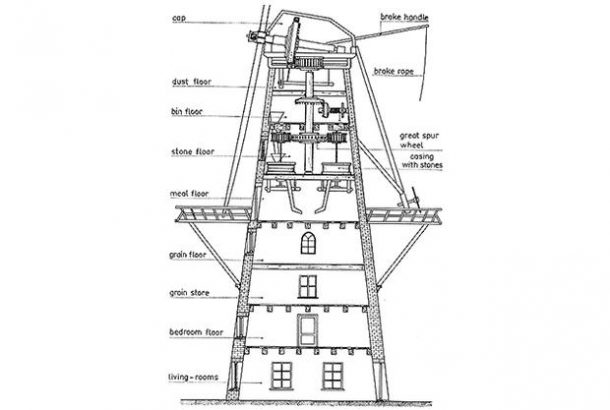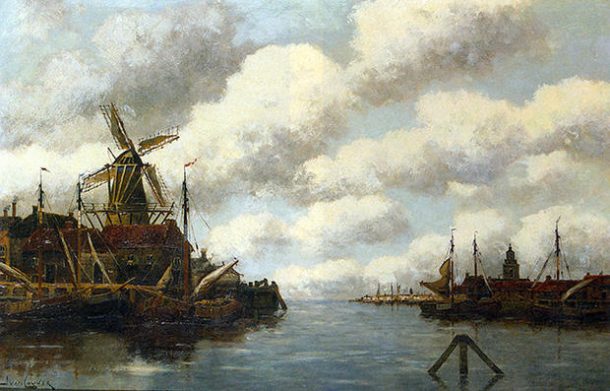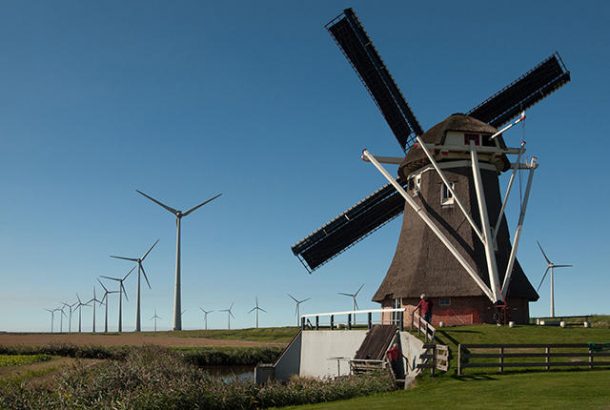When we think of the Holland, the image of quaint Dutch windmills readily pops up in mind. In fact, these iconic windmills are so popular that the Dutch village of Kinderdijk, housing 19 windmills, has recently been added to the list of UNESCO World Heritage Sites. So, we all know that these huge windmills featuring lattice-shaped blades were not powering up the neighborhood. But then, why were these wind farms used?

Infact, these windmills were used as a flood control system by the ancient Dutch in the 15th century. As one-fourth of the Holland is below the sea level, the country is prone to floods. As the climate change threatens the world, more countries are adopting the Dutch flood control mechanisms that are refined over the centuries to protect cities from the risk of flooding.
By harnessing the wind power, these windmills used to pump the water out of the polders to reclaim the swampy areas and convert them into irrigated farmlands. The windmills pumped water from the lowlands to keep the crops from drowning in the floods. These classic Dutch windmills could draw water up to five feet. For raising water even higher than five feet, a series of windmills called molengang was installed. In this system, the first mill would lift the water up to five feet, the second windmill would further raise the height of water by five feet, and so on. Finally, the water was drained in a canal.

Frederick Stokhuyzen, the windmill preservationist, wrote in 1962 that there were around 9000 windmills in Holland in 1800. The first sign of the Dutch windmill was discovered in the 13th century. During that era, these mills harnessed the power of the wind to grind grains and mustard seeds. They were also used for processes like paper making, wood cutting, and oil pressing.
Albeit their uniform exterior look, the internal mechanisms of these windmills vary from each other. Just like a lighthouse, the lower levels of the bigger windmills were often occupied by the miller. The work required some serious skills, as mentioned by Peter Moore in The Weather Experiment: The Pioneers Who Sought to See the Future:
“The art of windmilling is almost completely lost today but in [the 1800s] it was a common practice that required mental alertness. The miller would have worked inside, operating the gearing system, rotating the sails and applying the brake when the wind blew too strongly. This was a real danger. If the sails were not furled in a storm its arms could spin around at an ever-quickening pace, propelled by its own force as well as by that of the wind. The friction of the movement had been known to set mills alight, as had attempts to belatedly jam the brake wheel. The miller, therefore, had to be attuned to coming weather, judging the subtle shifts in the cloud base, the dimming of the ambient light or the quickening of the breeze.”

Some Dutch windmills were also used as messengers. The blades of the windmill were adjusted by the miller to broadcast news and inform others about the weather conditions. The vertical sails were often tilted to form a lopsided X to indicate sorrow or joy. The windmill blades were also used to signal the Nazi raids by the resistance forces during the era of World War II.
Now, there are only about 1200 of these Dutch windmills left. Holland still celebrates the National Mill Day to pay homage to its heritage on the second Saturday and Sunday of May.
Who knew a simple-looking wind mill could provide this much services!


